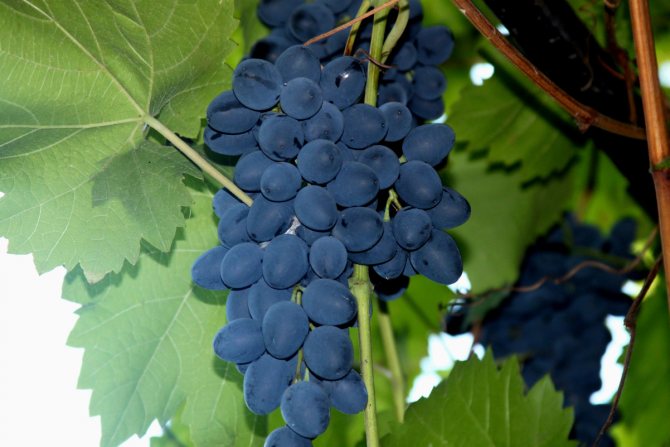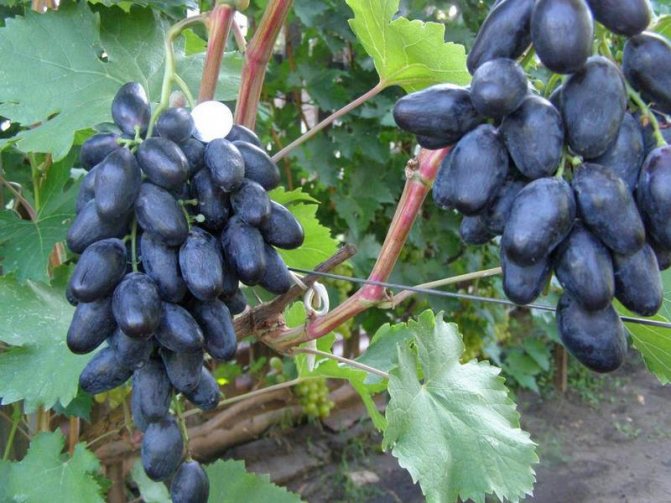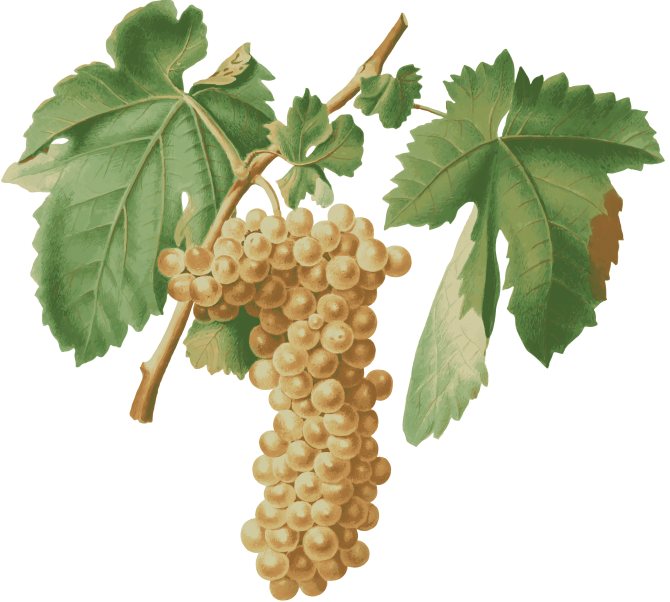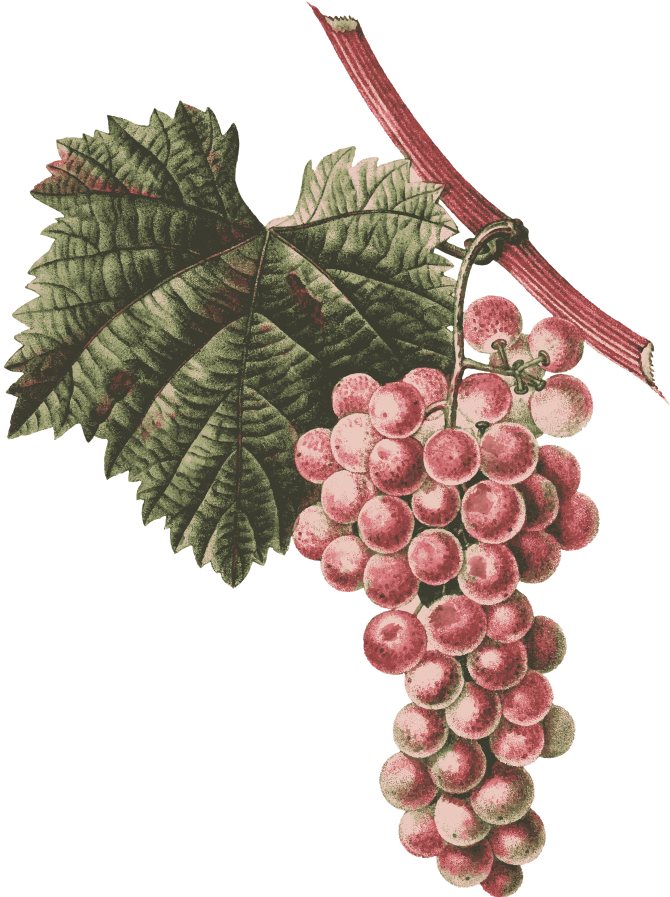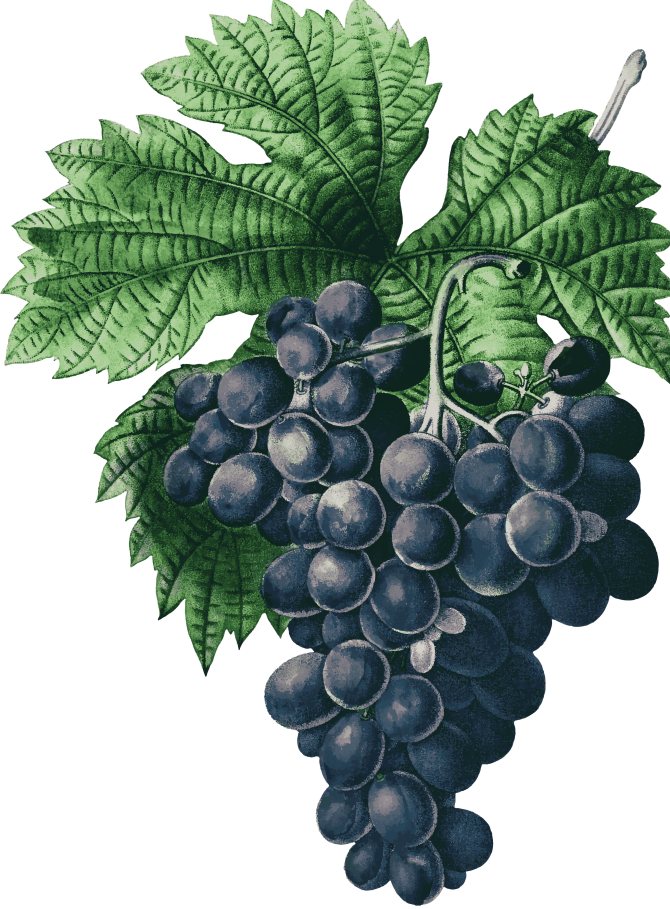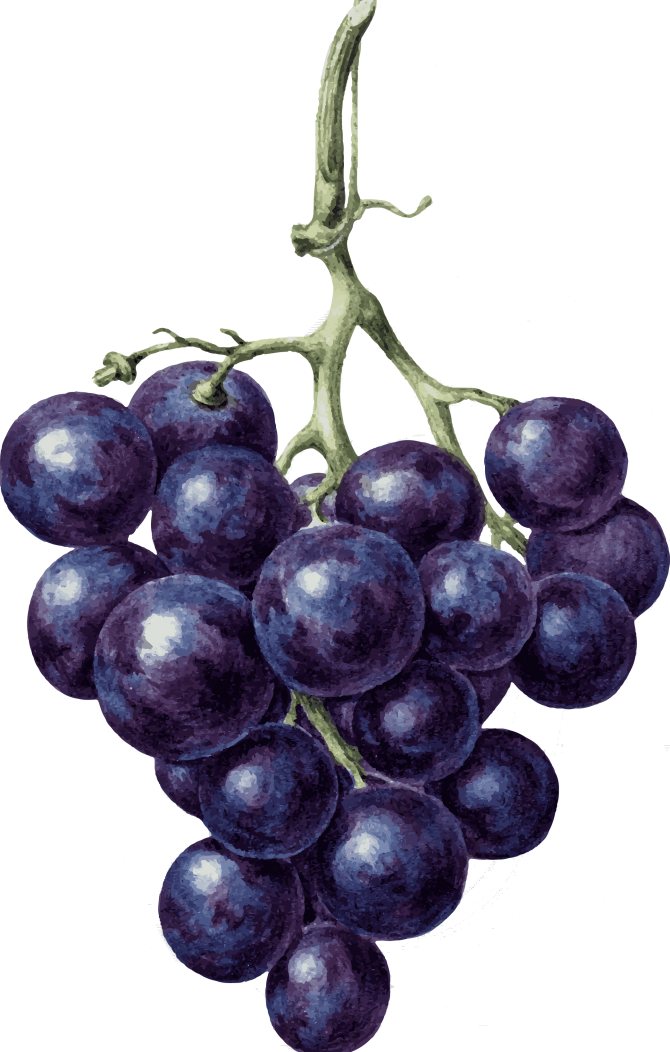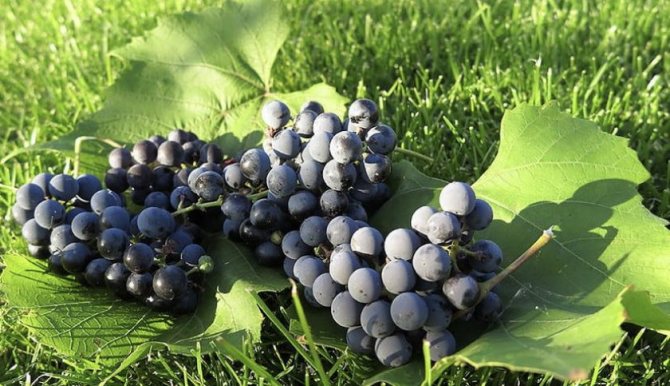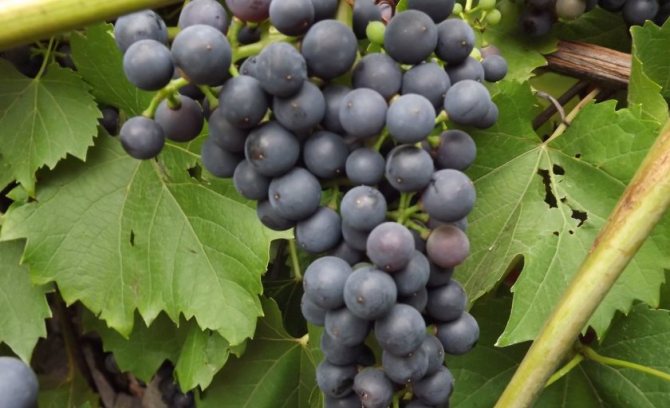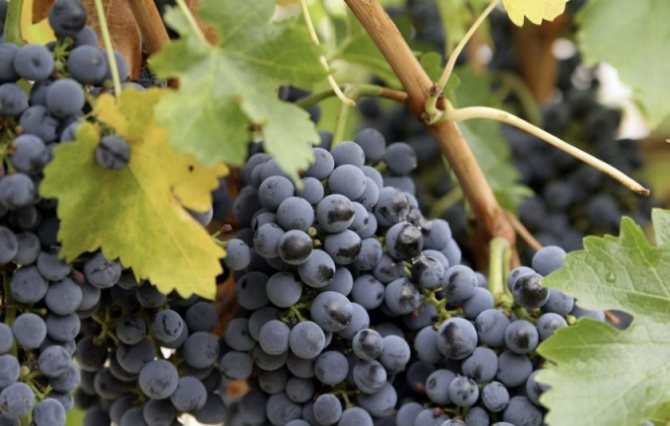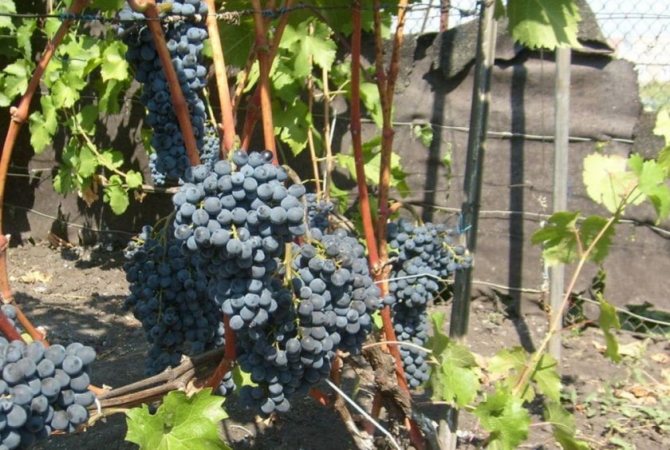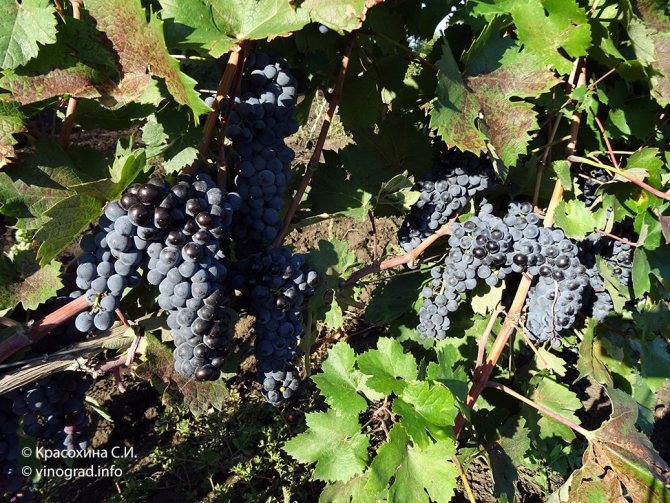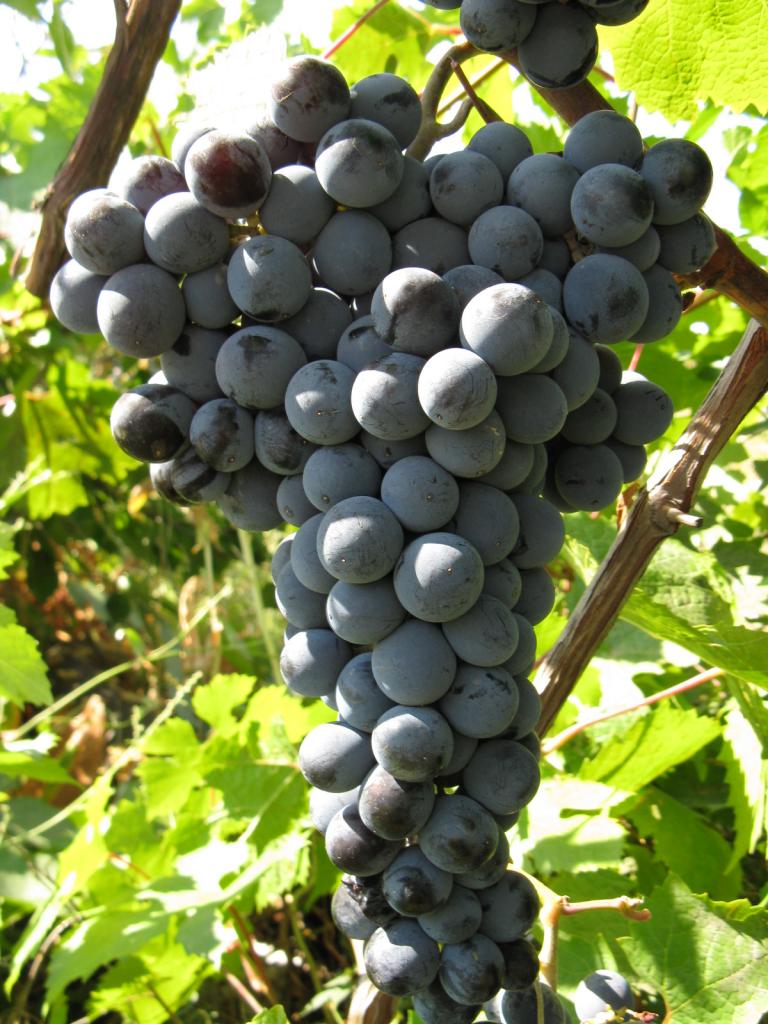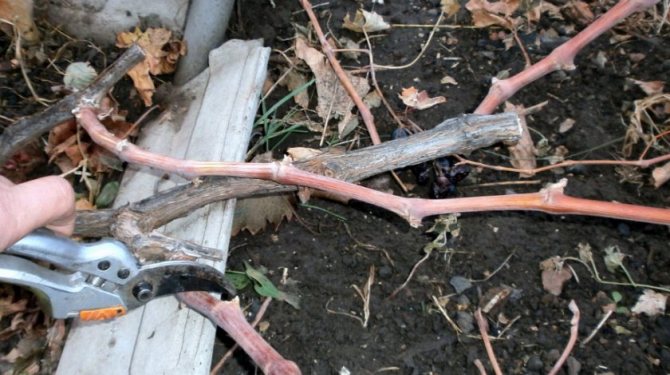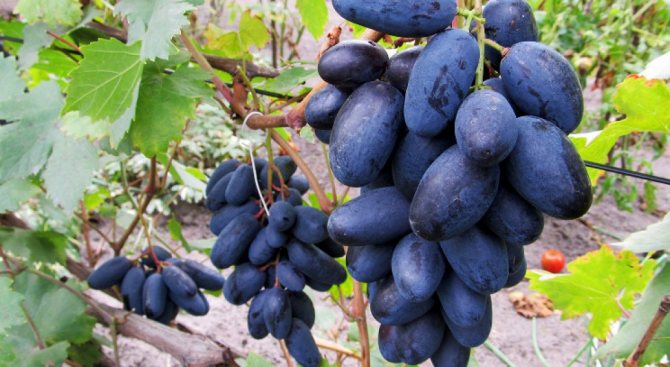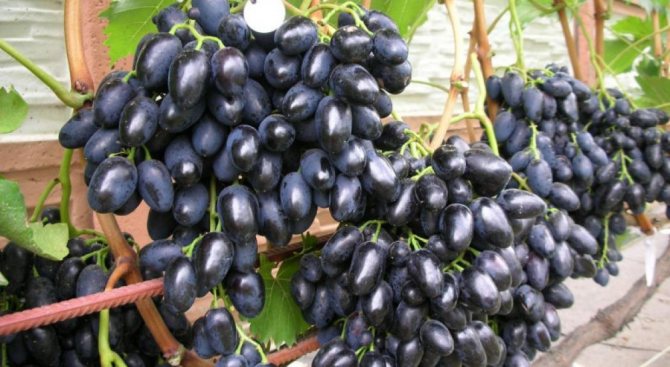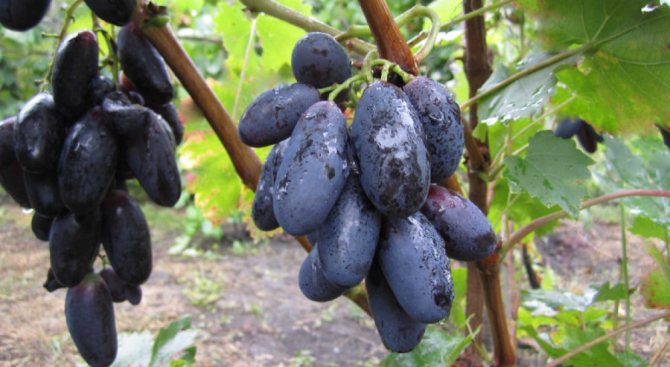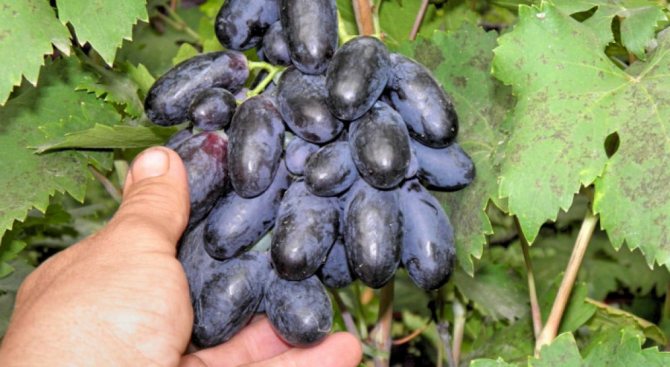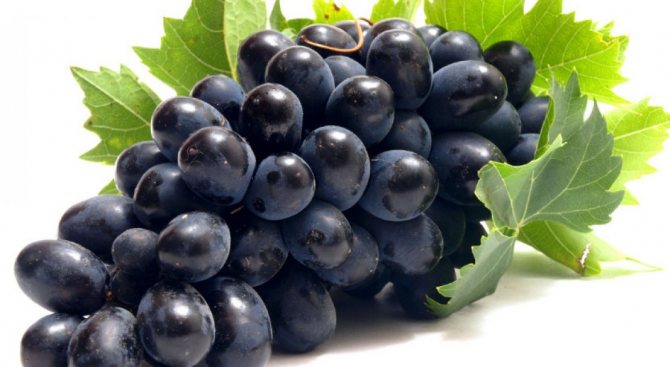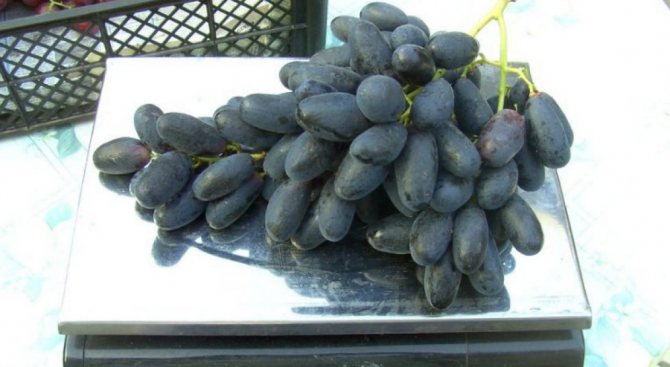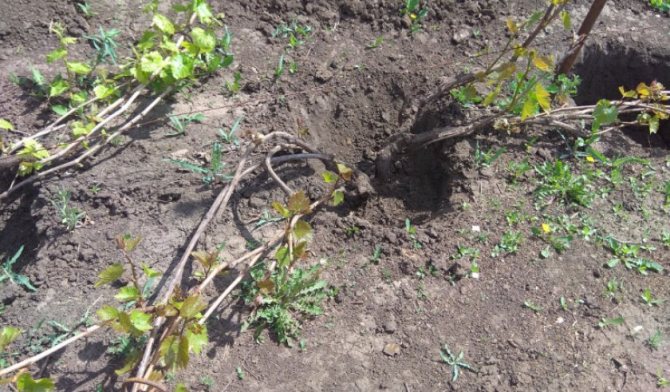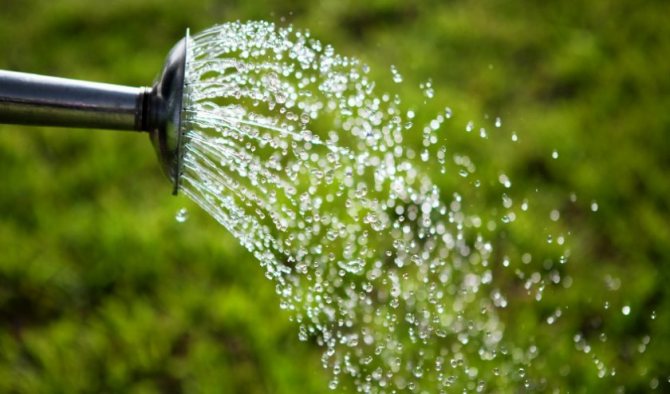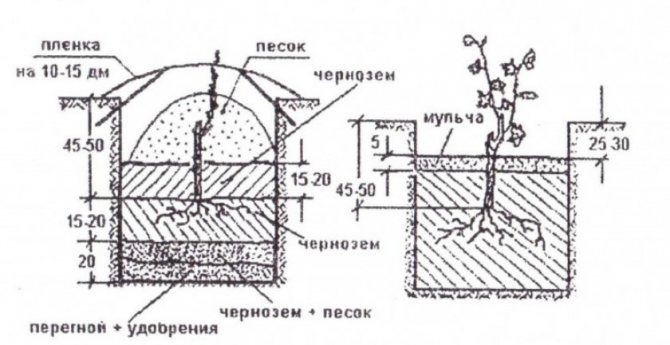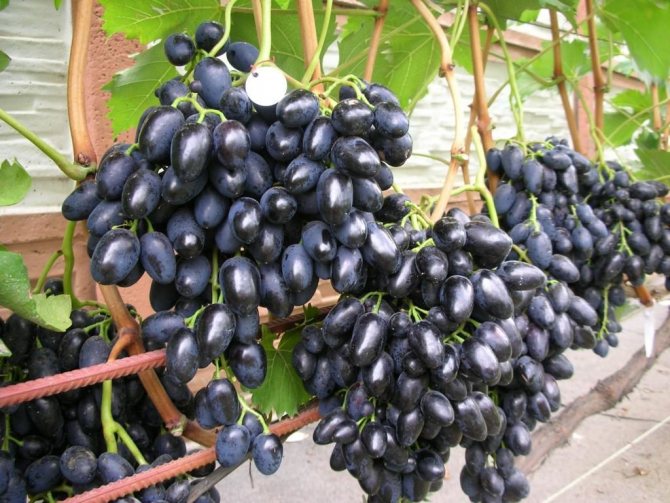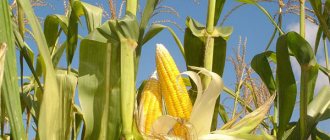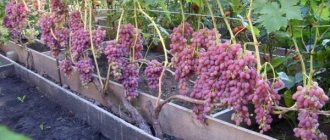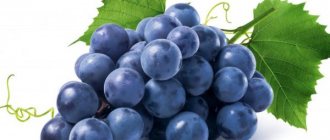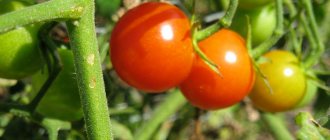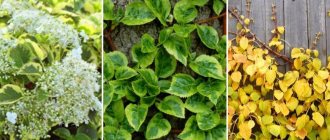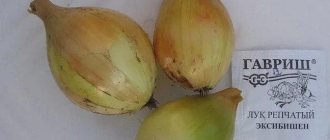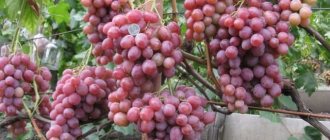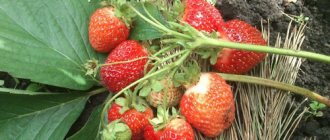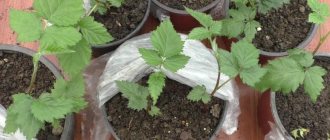In recent years, a large number of a wide variety of grape varieties have appeared. Among them, the Velika variety occupies a special place. It matures early, so grape lovers can indulge in it as early as mid-August.
The variety is able to quickly take root in the garden area and give a large harvest in the second year after planting the vine. This variety is capable of bearing fruit not only in the southern, but also more northern regions... In order for berries to appear soon, it is necessary to follow the rules for planting and leaving it. All these issues will be discussed below.
Origin story
The grapes were obtained by the Bulgarian breeder Ivan Todorov in mid-1987.
He crossed the vine Karaburna with grapes Alphonse Lavalier... A bush appeared on which large berries grew, so the breeder decided to name it Velika (big). But only 10 years later, at the end of 1997, this grape was added to the Bulgarian State Register.
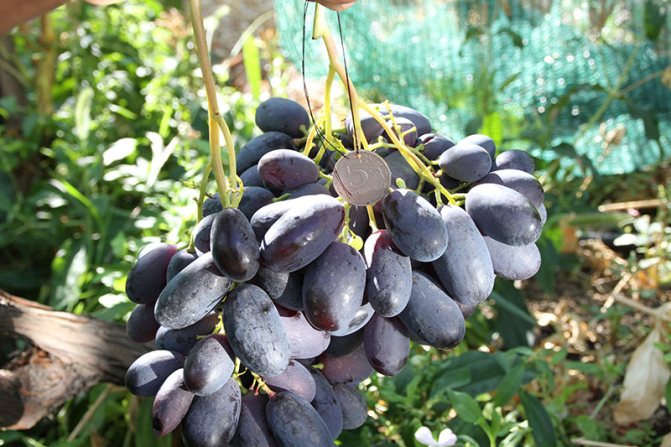
Bulgarian grape variety.
In 2006, the variety was brought to the Russian Federation., on the territory of which it quickly spread, despite the high cost of planting material. Now grapes began to cost the same as other grape bushes, so amateur gardeners began to buy them more often for their plots.
Awards
The variety was recognized as the best in 2012 and 2020 among all participants in the "Sunny Bunch" competition.
In 2013, this variety also took part, but slightly lost the main prize to the Akademik grape hybrid.
Factors that reduce the yield
The vineyard should be worth the investment by producing large yields. Everyone wants to grow an environmentally friendly, disease-resistant, healthy and tasty product. But in reality this is not always feasible. Most often, grapes do not meet expectations for the following reasons:
- Incorrectly selected variety. When buying grapes, you need to focus on the climate in the planting region. Before buying seedlings, you need to study the features of the varieties you like.
- When buying new varieties, they are placed in a common vineyard. It is advisable to plant new seedlings separately from other plants to eliminate the risk of infection with diseases.
- Planting varieties that love warmth in cold climates. In order for the plant to bear fruit in this case, it must be resistant to frost. Growing in a greenhouse can be another advantageous solution.
By avoiding the most common mistakes, gardeners get the maximum yield.
Note! The unpretentiousness of the variety in the content does not mean that you do not need to care for the vine!
In practice, when buying a resistant grape variety, some believe that it is not afraid of infection and other problems. This opinion is wrong. In reality, such a characteristic in the description of a variety only means that with proper cultivation, planting and maintenance at a high level, the plant has immunity. The likelihood that the plant will be hit by a pest is reduced, but not completely excluded.
Botanical characteristics
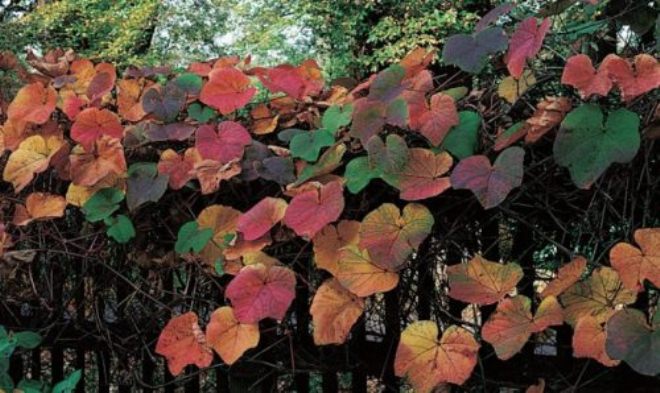

In the fall, the leaves turn red.
- Bushes grow very quickly... The flowers are bisexual, have a good development, therefore they can be well pollinated and give a large yield of berries.
- The size of the leaves is small, the upper and lower leaf parts are colored red-brown.
- The petiole is of medium size.
- After the cessation of sap flow, the leaves turn red.
Berries
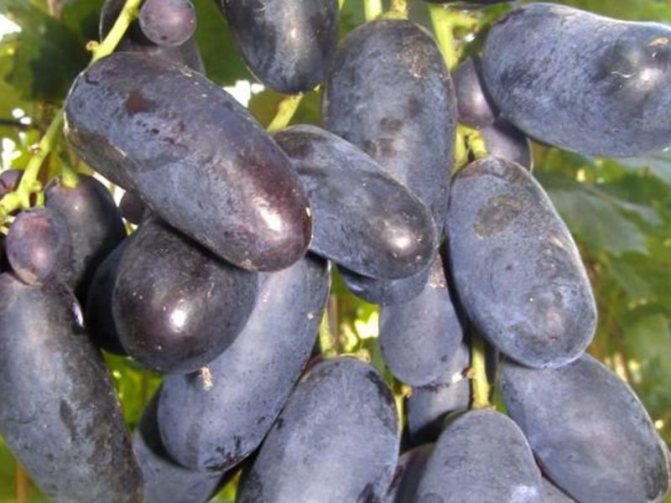

Velika berries are covered with a waxy coating.
- The grapes have a beautiful elongated shape with a pointed tip and a large size, weighing from 13 to 14 g... Sometimes there are specimens of a larger size. The berries have a crispy flesh, dense skin. But despite the density, the peel can be easily eaten.
- The fruits are interesting, unpleasant to taste... Some people who have tasted grapes say that the taste has a certain hue, similar to ripe cherries. The color of the berries is dark cherry. Fruit sugar level - 16%, and the acidity content is 6 g / l.
- The weight of the bunches exceeds 500 g... Brushes up to a kilogram and above are often found. Ripening of berries occurs within 135 days from the beginning of the growing season.
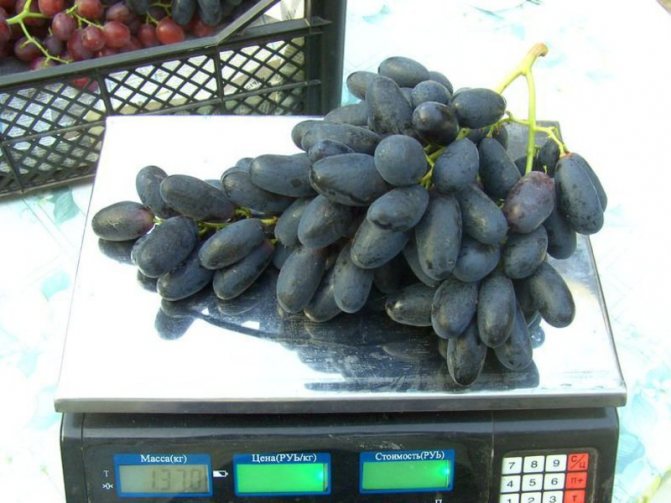

The weight of one bunch can be up to 1.5 kg.
You can skip pruning to lighten the vine, the bush is only pruned in mid-spring, but this is a traditional procedure.
Variety yield
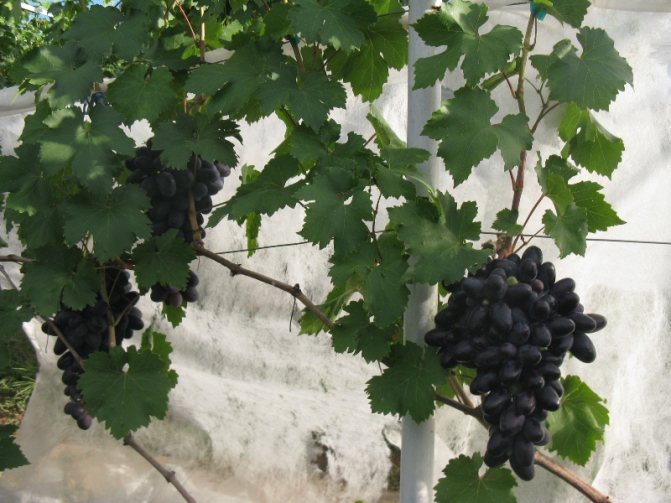

One bush produces 8-10 kg of berries.
Many amateur gardeners note the high yield of this variety.
More than 10-12 kg excellent, ripe fruits. They retain their great taste and are not prone to rotting, even if the plant is overripe.
Amazingly tasty Velika grapes: description of the variety and its features
Grapes are an amazing plant. Its fruits are distinguished by a wide range of applications and benefits for humans. Berries of grapes of different varieties are unique in their taste, structure, size, weight and purpose.
Some varieties are pleasant and tasty to eat just like that, others are used to make drinks with or without degrees, and still others are completely suitable for both winemaking and simple consumption.
The article presents a description of the "Velika" grape variety. What properties does it have and its fruits? All answers to this and other questions can be found in the text of the article.
What species does it belong to?
Wine is not made from Velika grapes; it is eaten fresh. This is a table grape variety. Its taste is pleasant, harmonious. Sweetness and acidity are consistent with each other. You want to feel such grapes completely, and then it's hard to stop.
Fresh varieties Lily of the valley, Laura and Zarya Nesvetaya are also good.
Breeding history
The Velika grape is obtained by crossing two grape varieties. The first French table variety is Alphonse Lavalle. The second table variety from Asia Minor is Karaburnu (Bolgar). Bred in 1987 by Ivan Todorov. The homeland of grapes is Bulgaria.
Velika grapes: description of the variety
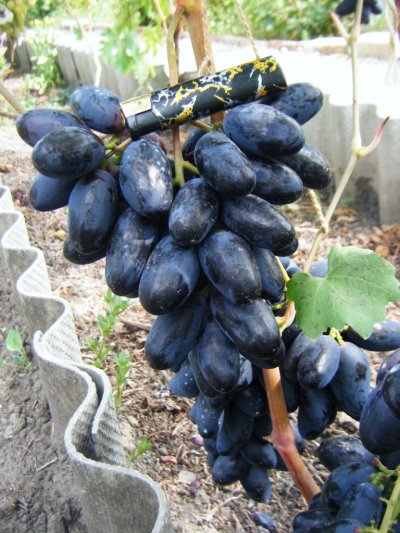

Bush growth quite tall, and the bush grows very quickly.
Leaves medium-sized, rounded. Interestingly, in the fall, the leaves become a beautiful fiery red color.
Bunches large. Their weight reaches about 600 grams. The clusters themselves are loose, conical or cylindro-conical in shape.
Delight, Merlot and Original also differ in large clusters.
Berries - this is a distinctive feature of grapes. The color of the berries can be from a noble dark red to dark purple, almost black. The size of the berries is very large, unlike most other varieties. The weight of one berry reaches an average of 14 grams. The shape of the berries is elongated, elongated, not very pointed towards the apex.
Pulp crispy. The skin is firm but easily eaten. Excellent sugar storage. The taste of the berries vaguely resembles plums or prunes.
Characteristics:
- The Velika grapes are very early ripe;
- In its homeland, Bulgaria, it ripens at the end of August. In Russia, depending on the area and natural conditions, ripening occurs at the end of July - end of August;
- On average, grapes ripen 130-135 days;
- Cold resistance is average, withstands up to -22 С;
- The yield of the grapes is very pleasing. The yield from one bush is on average 9-10 kg. About 350 centners of berries per hectare.
Among the varieties with an early ripening period, Krasny Delight, Pleven and Muromets stand out.
Photo of “Velika” grapes:
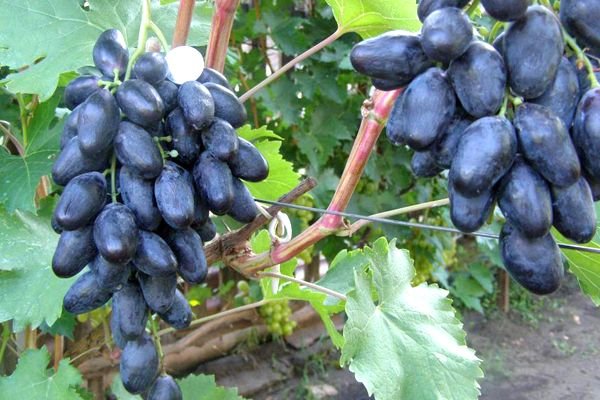

Diseases and pests
The biggest disadvantage of Velika grapes is their weak disease resistance.
If the disease is not detected and cured in time, then the harvest is lost. Therefore, it is recommended to process the plant even before signs of disease appear.
For this, the following fungicides are suitable: Abiga-Peak, Albit, Bayleton, Ordan and others.
The following is a list of grape diseases and drugs to combat them:
- Mildew. It is manifested by the appearance of numerous yellowish spots.
- Oidium. It is manifested by the appearance of plaque and mold on the shoots.
- Alternaria. External manifestation is similar to oidium. Shoots are covered with brown and gray spots. / Li>
- Grape anthracnose. When manifested, brown dry spots appear on the leaves.
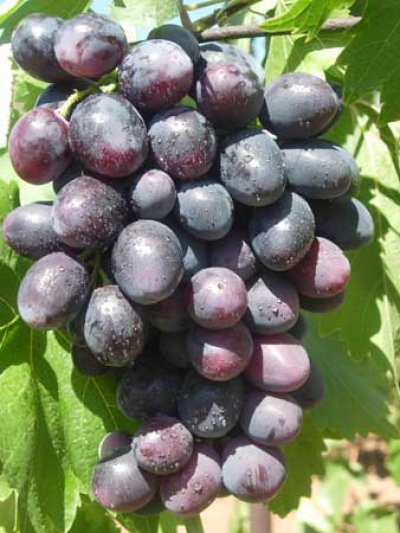

Pests also do not bypass these grapes. The worst pest is phylloxera, or the devastating aphid. She begins the destruction of grape bushes from the roots, thereby reducing the yield, and later completely killing the bush.
Phylloxera control methods:
- destruction of already infected bushes;
- burning leaves (if the pest is on them in small quantities);
- planting grapes in sandy soil;
- flooding of bushes with water for several days;
- the use of drugs (Fastak, Aktellik, Kinmiks, Fozalon).
Among the diseases often affecting grapes are chlorosis, bacteriosis, rubella and bacterial cancer. You can familiarize yourself with their signs and learn about preventive measures in separate materials on our website.
The second dangerous enemy of grapes is wasps. During the ripening of the berries, they dig into them and suck out all the pulp, leaving only the skin. Other insects flock to the smell of grapes, already "processed" by wasps. So you need to fight the wasps. There are several ways to do this:
Poisoned Wasp Bait: The easiest and probably the most effective way to kill wasps. For him, you need to take any product sweeter than your grapes. Add odorless insecticides to it. Then spread the bait near the hive or around the grapes.
We poison the wasps in the hive itself: Everything is very simple, but quite dangerous. When all the wasps have returned to the hive, we inject the poison into it.
We smoke and destroy the wasps: This is the most dangerous way, it must be done with great care and protection.
The wasps are smoked out of the hive with the help of smoke. Some will immediately fall to the ground, and some will attack you. Wasps that have fallen to the ground must be trampled mercilessly.
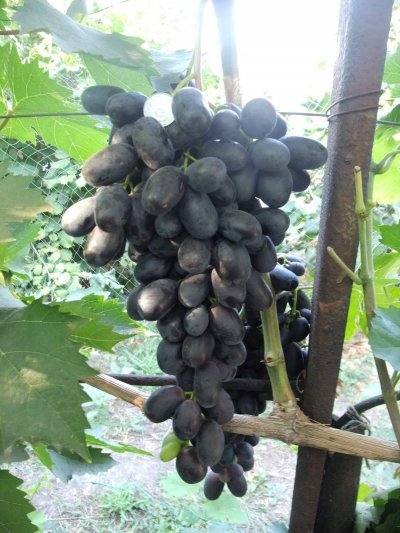

The birds also destroy the berries during their ripening. In addition, birds can serve to attract wasps. These animals certainly do not need to be poisoned.
To protect the berries from birds, a net is installed that does not allow any bird to get to the grapes and spoil your harvest.
As a result of the article, we have a general idea of the Velika grape variety. Its advantages include the color and size of berries, their taste, good yield, early ripeness.
But there is also a drawback, and it is very strong. The grape has very poor disease resistance. He needs care and regular prevention to prevent disease and death of the plant.
But this proves once again that the Velika variety is beautiful and tasty. Such varieties most often have a pleasant, harmonious taste. And resistant varieties are more likely not so distinguished by their taste. This variety is also unstable against pests. But here, too, prevention and timely treatment help.
Rochefort, Platovsky and Athos also have a magnificent and harmonious taste.
Useful video
Video review of Velika grapes:
If you find an error, please select a piece of text and press Ctrl + Enter.
Advantages
The vine has a number of positive properties, thanks to which the variety is chosen by an increasing number of amateur gardeners:


The variety has a long shelf life in cool places.
- The variety is resistant to low temperatures... It can perfectly survive the winter period without shelter if the temperature has dropped to negative 22 degrees Celsius. If you cover the vine, then this variety can withstand 30-degree frosts.
- Highly resistant to the negative effects of insect pests, therefore, it is possible not to process the grape bushes and not spray them with a variety of special preparations (processing can be done in the autumn period in order to exclude the development of various pests stored in the foliage, and the leaves need to be burned).
- Unpretentious grape bushes, therefore can be grown in harsh climates, even where thermophilic plants do not grow.
- Fruit can be transported long distances, while they do not lose a presentable appearance.
One major drawback
In addition to its advantages, the Velika variety has a small disadvantage. It lies in the fact that the plant can poorly resist diseases.
Protection from diseases and pests
One of the significant disadvantages of the Velika variety is poor resistance to diseases, therefore it is important to regularly examine the bush and clusters, looking for traces of the presence of pests or diseases, and if they are found, immediately carry out processing.
Most often, these grapes can be affected by fungal diseases:
- powdery mildew;
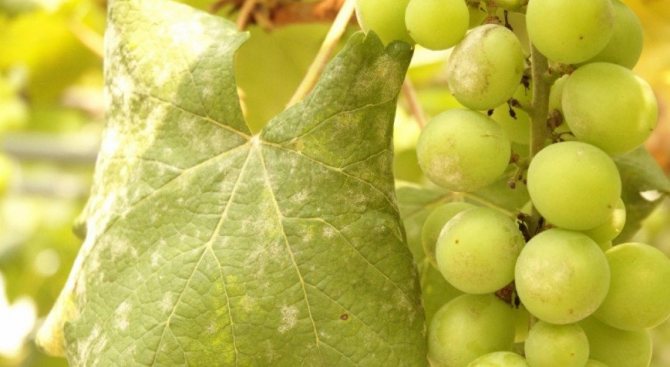

- anthracnose;
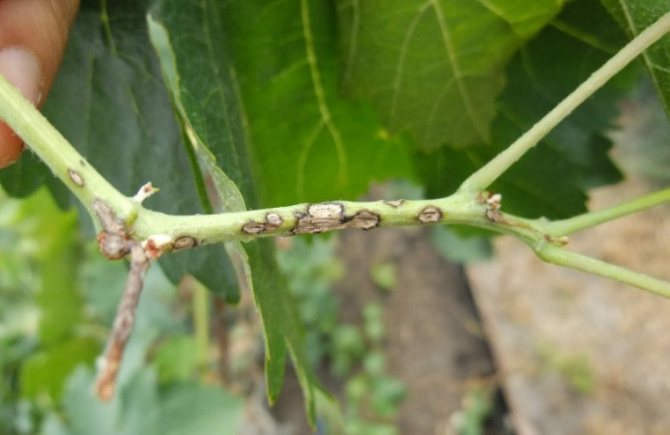

- gray rot;
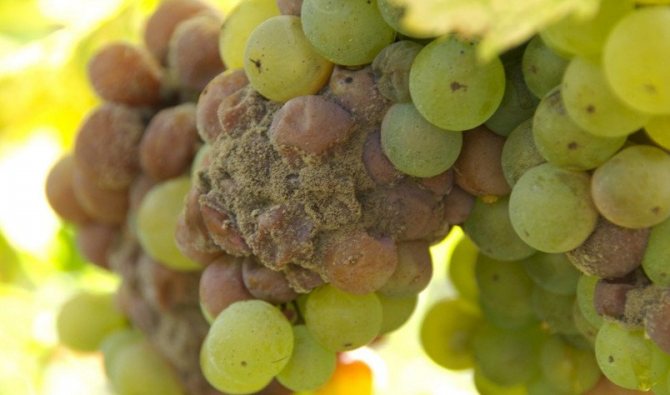

- black spot.
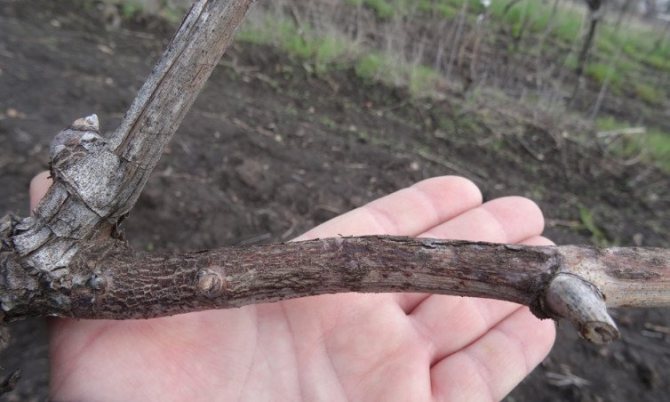

The following fungicides are used to combat them:
- Abiga Peak;
- Bayleton;
- "Ordan".
Of the pests, phylloxera and aphids are most often noticed on grapes.
Landing
Buyers can purchase seedlings in special nurseries in early autumn.
It was at this time that the best survival rate of the vine was noted, and already in the early spring period there was an active growth of grapes in comparison with young grape shoots, which were planted in the spring.
If an amateur gardener expresses desires for planting grapes in the spring, then professionals are given advice on acquiring young bushes that have begun the growing season.
Assessment of seedlings
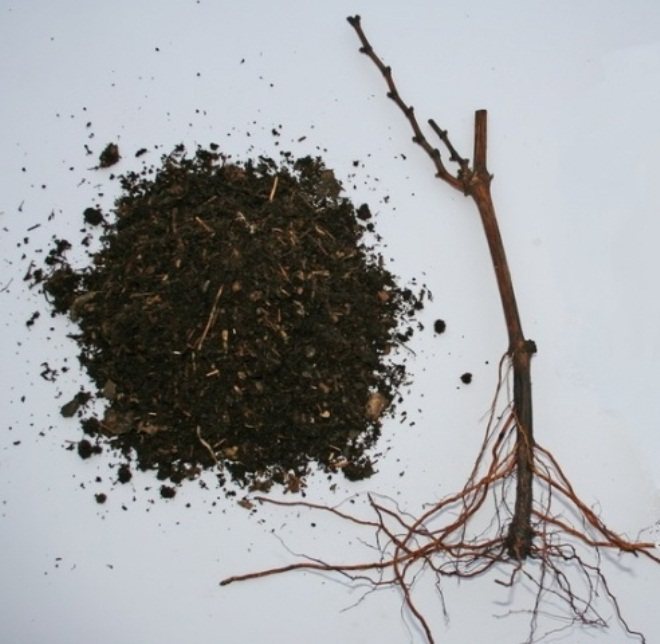

A quality seedling of this variety.
In this case, an assessment of the appearance of grape seedlings should be carried out:
- each of the shoots should have 5 to 8 leaves;
- the leaf plate is developed and have a green tint;
- the roots must be well developed;
- shoots have a thickness of 2-3 cm.
Seat selection
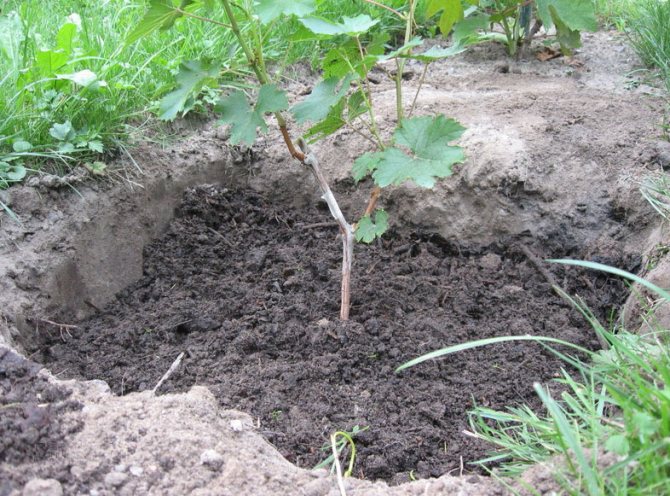

For full development, grapes need warmth and sun.
It is necessary to plant young seedlings in places well warmed by the sun's rays, protected from strong winds and excessive moisture.
Often, the southern or south-western sides are chosen for planting grape bushes next to fences, buildings or slopes.
Distance selection
Any amateur gardener should make the right distance when planting.
- Between trees and bushes it is necessary to retreat a distance equal to 3 to 3.5 meters.
- In addition, one should retreat from fences, buildings at a distance of 0.5 to 1 m.
Soil selection
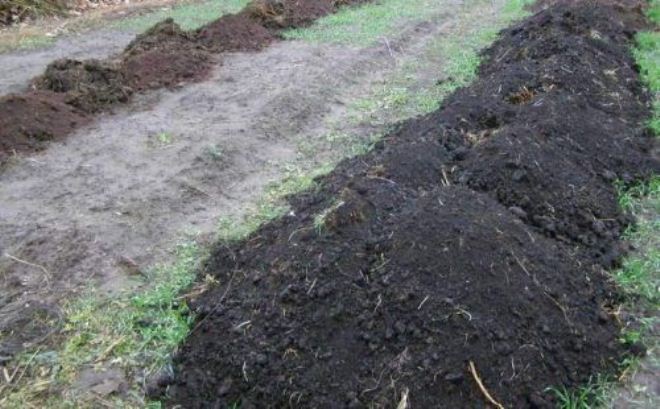

Poor soils should be enriched.
Particular attention must be paid to the composition of the soil. Wetlands for planting should be avoided. It will not take root on lands where groundwater lies close to the surface. In this case, soon the root part will begin to rot, which will lead to disease and death of the seedlings.
Excellent growth and fruiting of grape bushes is noted on sandy loam and loamy soils... With proper care of the plants, a good harvest can be obtained when grown in stony, clayey and gristly earthen areas.
Digging
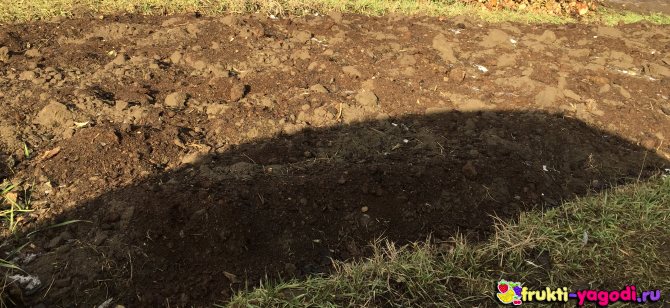

The plot for grapes has been dug up. Next, we apply fertilizers.
Important! In order for the vine to grow and develop well, 3 months before planting, the area allocated for these purposes is dug up, while the required amount of fertilizer is applied.
Algorithm
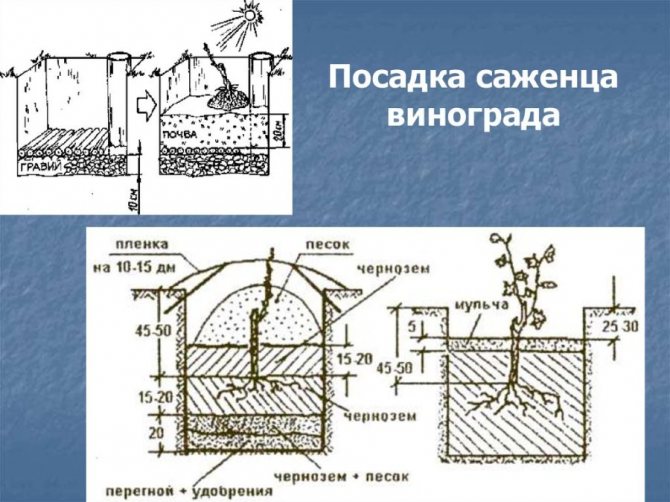

The scheme of planting grape seedlings.
- The planting pit should be of impressive size, approximately to a depth of 80-90 cm... The larger it is, the higher the nutrient content will be in it, and this contributes to better acceptance of the bushes and their active growth.
- Initially, gardeners remove 50 cm of the top fertile layer of the earth.
- Gravel must be poured into the bottom of the dug dimple.
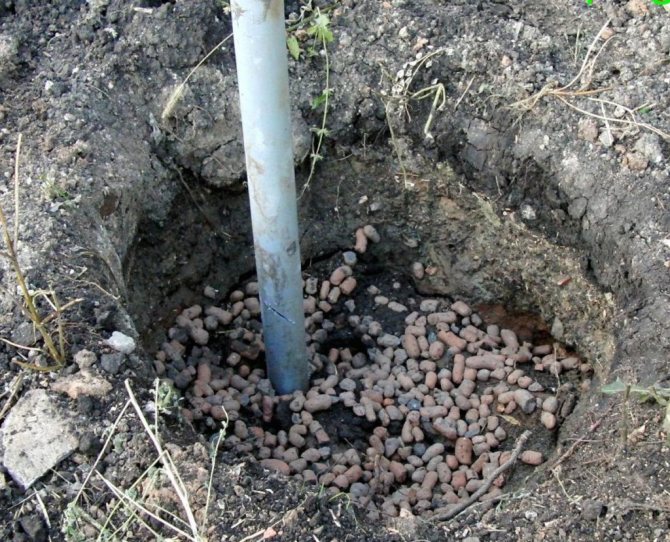

Don't forget about drainage. - If, after removing the fertile soil layer in the pit prepared for planting, there is a remnant of clay, then it must be mixed with a lot of sand.
- You need to take 2 buckets wood ash, 2 manure buckets, 0.5 kg superphosphate fertilizers and mix with a fertile soil layer.
- Then the prepared soil is poured into the planting pit and left until it sits down.
You should know. Planting of seedlings of the Velika variety should be carried out shortly after purchase.... It is important to pay attention to the degree of liveliness of the roots.
First, the plants should be put in water for a day, then the tips of the root system and shoots should be slightly trimmed. After cutting the roots, they must be dipped in a kind of clay slurry, after which they are planted in the ground in a prepared area.
Resistant grapes
Many misunderstandings arise when planting complex-resistant varieties. Buying such grapes, the gardener assumes that he will not have to spray the vineyard. In practice, things are far from so smooth.
Resistant to diseases, pests, frost varieties and forms grapes really require significantly fewer treatments with pesticides. Usually, it is enough to process them twice a season (the first time - before flowering, the second time - after flowering, when the berries reach the size of a pea), or they can be grown without any treatment with pesticides at all, depending on the degree of resistance, which is usually evaluated by a five-point Husfeld scale:
How to care for grape bushes
The grapes are characterized by a high degree of unpretentiousness. But in order for the vine to please for a long time, it is necessary to take care of the plants:
- Every year you need to prune grape shoots in spring or autumn, leaving 20 pieces each, on which you can see the berries.
- In areas with low temperatures in winter, it is necessary to cover the grapes, which will exclude the possibility of freezing.
- On each of the shoots, 3 to 4 ovaries should be left.... This measure will help to avoid breakage of the grapes and increase the weight of the berries.
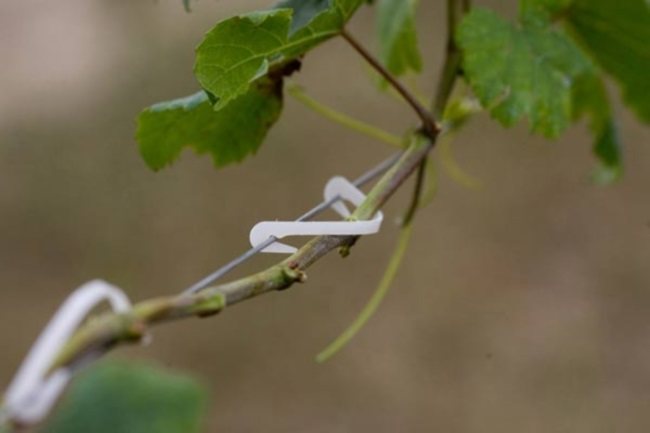

The shoots must be tied up so that they do not break off under the weight of the bunches. - Plants are watered every day while grape bushes take root... Several weeks after planting, watering is carried out once a week.
- In spring and autumn, grape bushes need to be fed so that the plant gains strength for a new harvest.
Fight disease
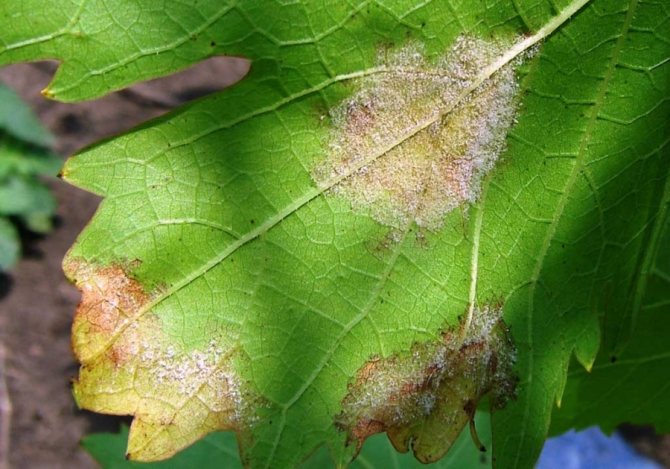

Signs of mildew damage to grapes.
Among the many pluses, the Velika grape variety has some minor drawbacks. It is not very resistant to a variety of diseases.
But with good treatment with special agents for fungal diseases, grape bushes are able to cope with this negative impact.
It should be processed every 3 weeks, while the substance changes... These measures help to cope with a variety of pathologies. But you should not process the bushes during the ripening period of the berries, so as not to infect the fruits with chemicals that are poisonous to humans.
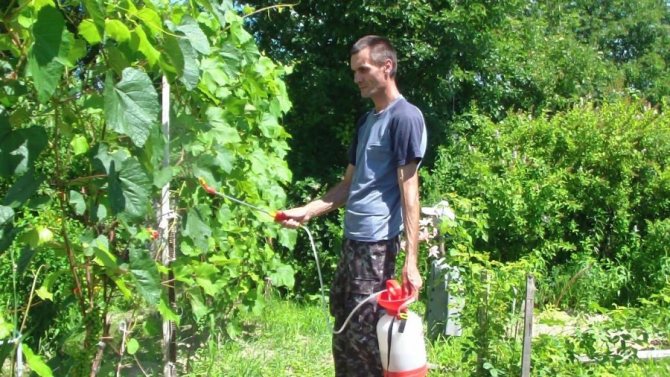

To get a good harvest, it is necessary to carry out at least three treatments.
With proper care of the planted grape bushes, the amateur gardener will receive an excellent harvest in large quantities, which will delight every year.
Growing features
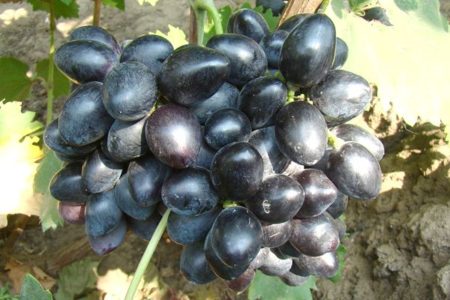

It is recommended to grow Velika grapes in warm regions of the country. Otherwise, it will hurt, and the taste and fruit will differ from the declared characteristics. Planting operations are carried out in spring or autumn in warm calm weather. You need to choose a place that is sunny and well-ventilated, it is advisable to plant grapes on a hill. The hole is dug in advance, and it is filled with a mixture of sand, soil and humus. You can also graft the variety on a medium-sized stock, this will promote moderate growth.
Interesting!
When planting seedlings, the soil can be harvested in the second year; when grafting, sweet berries can be tasted only after 3 years.
Watering is carried out as needed, waterlogging of the soil is unacceptable. You cannot do without regular fungicide treatments, because the variety is susceptible to fungal infections. From time to time, the preparations need to be changed, since the grapes quickly get used to any remedy and its effectiveness decreases.
In addition to all the plants require regular weeding, weeds are often carriers of infections. With the arrival of spring, it is necessary to begin preventive treatment of the vineyard, they are carried out at least three times per season, for this you can use Bordeaux liquid or a solution of copper sulfate. The vine is formed annually, as it grows very quickly. Before the onset of cold weather, the vine is cut off, bent to the ground, sprinkled with soil and foliage, and then covered with covering materials or spruce branches.
Variety reviews
There are many reviews that only positively characterize the Velika variety.
(Nikolay Antonovich, 54 years old, Naberezhnye Chelny). I recently tried to plant this variety. The fruits are large, sweet, but not sugary. My family ate and praised. I advise everyone!
(Alexandra Pavlovna, 66 years old, Smolensk). I have been gardening for several years now, since I retired. Recently I decided to try planting grapes in my garden. I came across the Velika variety. The vine grew quickly. I tried the first crop the next year. The taste impressed with its uniqueness.
Although I live in the harsh conditions of the central zone of the Russian Federation, the bushes are not frozen. I advise everyone.
What species does it belong to?
Wine is not made from Velika grapes; it is eaten fresh. This is a table grape variety. Its taste is pleasant, harmonious. Sweetness and acidity are consistent with each other. You want to feel such grapes completely, and then it's hard to stop.
Fresh varieties Lily of the valley, Laura and Zarya Nesvetaya are also good.
Almost everyone likes Velika berries, and they are sold out instantly in the markets.

